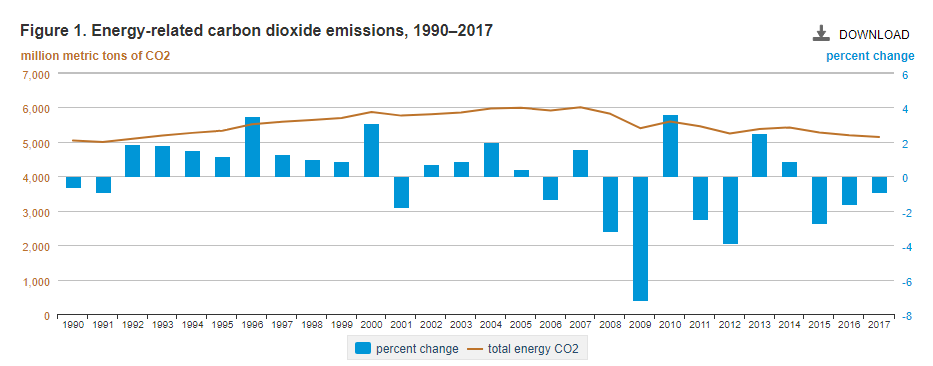In March 2015, the US committed in Paris to reduce greenhouse gas emissions by 27% by 2025, relative to 2005 levels. As a checkpoint, the US had committed to being 17% below the 2005 emissions in 2020. And then from 2020 to 2025, we’d drop another 10% to hit the promised 2025 levels.
Last month, China revealed they had cut emissions by 45.8% in 2018 relative to 2005, exceeding their goal of 45% by 2020. But how is the US doing?
In August 2018, the EIA released updated numbers for the US 2017, and it showed a 0.9% reduction for 2017. The graph is below:
So, the high water mark in 2005 was 6B tons, and we finished 2017 at 5.1M tons, which is a 15% reduction. The CO2 emissions is expected to rise by 2.8% in 2018, due to abnormally harsh weather and economic growth. This isn’t atypical: You can see from 2012 to 2014 we had increases in CO2 emissions largely due to economic growth.
The Paris agreement aimed to have the US at 17% below 2005 levels by 2020. It’s not out of range. A cooling economy, and continued conversion of coal to natural gas is one recipe that will easily hit the goal. Beyond that, though President Obama had promised another 10% reduction from 2020 to 2025. That’s 2% YoY, which will be very tough to meet.
